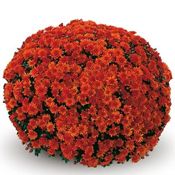In recent years, a wave of interest has surged around a remarkably innovative gardening technique known as Electroculture. Electroculture has been touted on social media and gardening forums as a revolutionary method that harnesses the Earth's "energy" to boost plant growth, yield, and resilience against pests and diseases, rather than using chemical means, such as pesticide or fertilizers. Electroculture has sparked both fascination and skepticism among gardening enthusiasts. However, with its roots stretching back to the 18th century, you have to wonder why this method has not been previously universally adopted in agriculture if it's as effective as claimed.
This exploration seeks to demystify Electroculture, examining its principles, historical context, and the evidence—or lack thereof—supporting its efficacy.

What is Electroculture?
At its core, Electroculture involves utilizing natural or artificially-generated electrical fields to stimulate plant growth. The technique can be applied through passive methods, such as inserting copper wires wrapped around wooden dowels into the soil near plants, or more active approaches that involve the application of electrical currents directly to the soil or plants. Proponents claim that this method leads to enhanced growth, increased yield, and fewer pests and diseases, presumably by improving nutrient absorption, water uptake, and overall plant metabolism.
The Historical Context
Electroculture is not a new concept. Its origins can be traced back to experiments conducted in the mid-18th century by scientists like Abbe Nollet and later, Jean-Antoine Nollet, who explored the effects of electricity on plant growth. Throughout the 19th and early 20th centuries, the technique saw periods of interest and research, with claims of successful application in agricultural practices. However, with the advent of synthetic fertilizers and pesticides in the mid-20th century, Electroculture largely fell into obscurity, dismissed by some as pseudoscience. It is interesting to note that synthetic herbicides and pesticides were first developed to support military operations. Ammonium nitrate, the primary ingredient in fertilizers was originally used as bomb-making material, and then the surplus marketed to farmers as fertilizer.
Modern Perspectives and Claims
In the age of social media, Electroculture has experienced a renaissance, with numerous gardeners and influencers sharing their successes and promoting kits that promise to make implementing Electroculture easy and effective. China has been at the forefront of reviving interest in electroculture on a larger scale. Major universities and state-owned enterprises have been researching electroculture methods since the 1960s, with large field trials across China showing yield increases of 20-30% for staple crops like wheat, rice and vegetables.
The technique involves running electric currents through crops via electrodes placed in the soil or by installing electromagnetic generators near the plants. While the exact mechanisms are still being studied, theories include electrically stimulating soil microbes that promote growth and increasing nutrient uptake in plant roots. China sees electroculture as a way to boost food production sustainably by reducing reliance on fertilizers and pesticides.
Despite these promising results in China, there remains a significant gap in broader scientific research to substantiate electroculture claims conclusively on a global level. Skeptics still point to the lack of empirical evidence and vague explanations about how the technique actually works.
Scientific Evidence and Skepticism
The most pressing issue with Electroculture today is the lack of empirical evidence to back up the enthusiastic claims made by its proponents. While some historical and recent studies suggest potential benefits from applying electrical fields to plants, these findings are often limited in scope, with many studies suffering from methodological flaws. Critics argue that the explanations provided for how Electroculture works are frequently vague and scientifically unfounded, blending half-truths with speculation.
The Verdict
Given the mixed evidence and the plethora of claims surrounding Electroculture, it's challenging to draw a definitive conclusion about its efficacy. The scientific community's interest in exploring non-chemical methods to enhance plant growth is undeniable, and Electroculture may hold some promise in this regard. However, until more rigorous, peer-reviewed research is conducted, Electroculture remains an area of speculative interest rather than a proven gardening solution.
The Way Forward
For those intrigued by Electroculture, experimenting in your own garden could provide some personal insights. Approaching it scientifically, with control groups and careful observation, could help shed light on its effectiveness for your specific garden conditions. Yet, as gardening influencer Kevin from @epicgardening suggests, perhaps the most reliable way to achieve a thriving garden is not through unproven methods like Electroculture but by fostering a natural ecosystem that promotes plant health and resilience.
In conclusion, while Electroculture presents an intriguing concept that merges ancient wisdom with modern aspirations for sustainable and ecologically-balanced gardening, its place in the future of agriculture and home gardening remains to be seen. As the conversation around it continues to grow, one hopes that it will inspire more scientific inquiry, ultimately leading to a clearer understanding of its potential benefits and limitations.
































































































































































































































































































































































































































